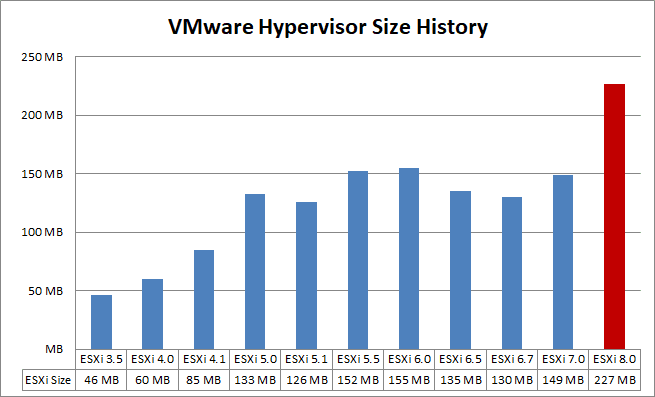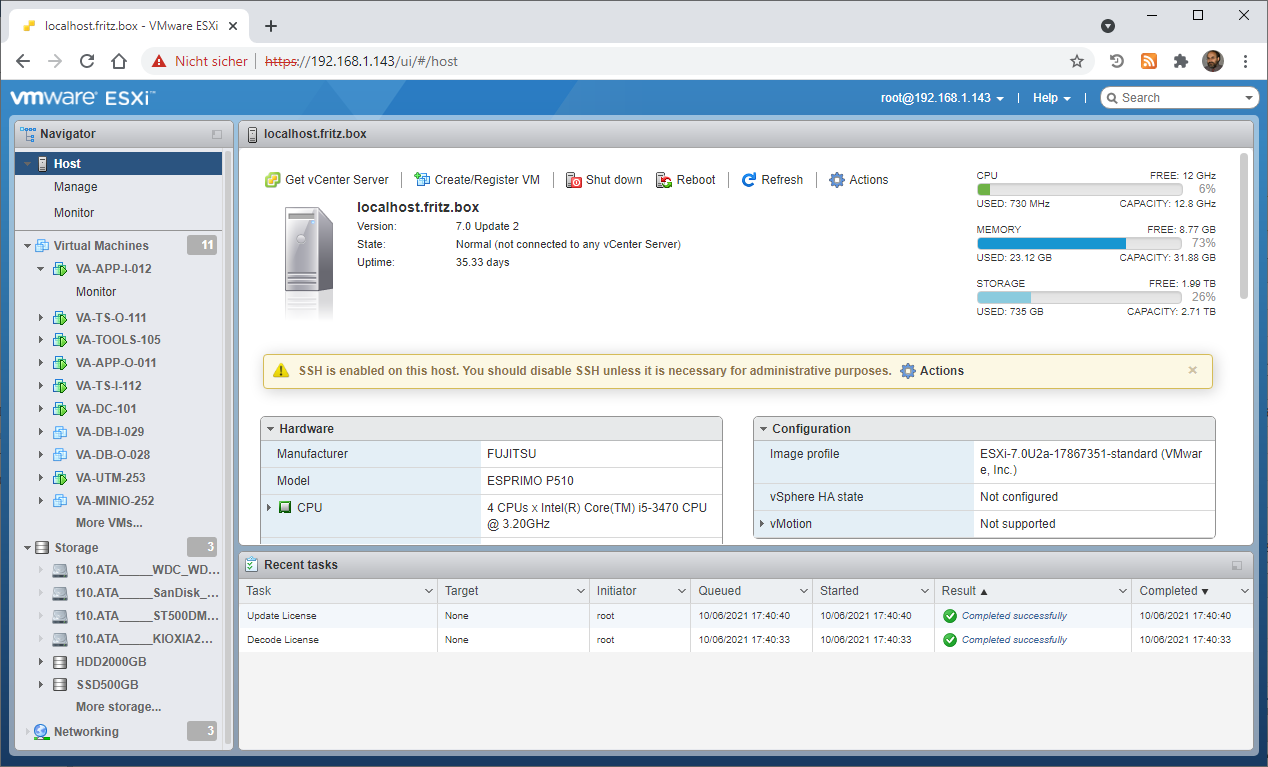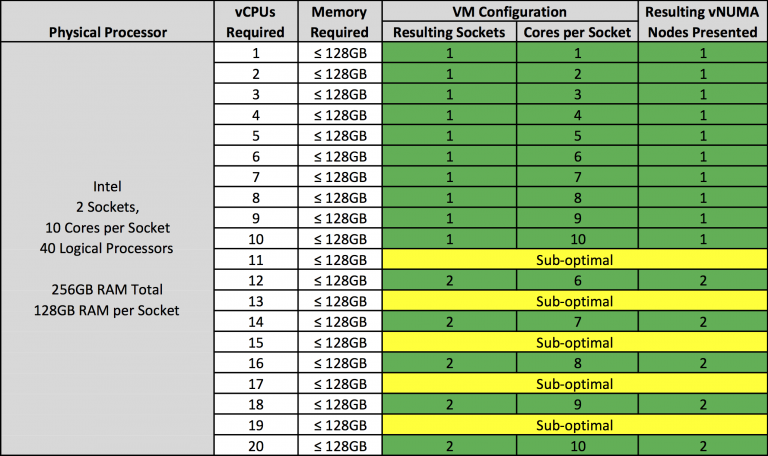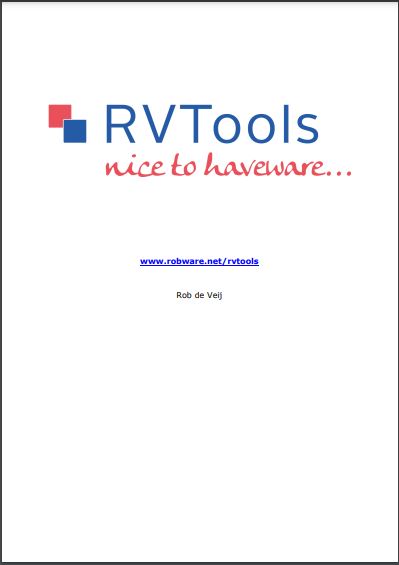
Archive for the ‘VMware vSphere 6.7’ Category
VMware vSphere Hypervisor (ESXi 3.5 – 8.0) – Hypervisor Size Comparison
Freitag, Januar 13th, 2023VMware Lifecycle Product Matrix – (Un)Supported Products as of October 15 2022
Dienstag, Oktober 18th, 2022VMware Lifecycle Product Matrix – Supported Products as of March 16 2022
Freitag, März 18th, 2022![]() To help customers with that transition we are extending the general support period for vSphere 6.7 0riginally vSphere 6.7 was scheduled to reach EoGS (End of General Support) on November 15, 2021 – we are extending this date by 11 months to October 15, 2022
To help customers with that transition we are extending the general support period for vSphere 6.7 0riginally vSphere 6.7 was scheduled to reach EoGS (End of General Support) on November 15, 2021 – we are extending this date by 11 months to October 15, 2022
Linux version of Ransomware AvosLocker – targets VMware vSphere Hypervisor (ESXi 6.x/7.x)
Dienstag, Januar 11th, 2022VMware vSphere Hypervisor (ESXi 7.x) – CD-ROM vulnerability (CVE-2021-22045) the workaround requires that all CD-ROM/DVD devices are disabled/disconnected on all running virtual machines
Freitag, Januar 7th, 2022Python ransomware script targets ESXi server for encryption – because configuration errors rapidly escalated to a ransomware attack inside a virtual machine hypervisor
Mittwoch, Oktober 6th, 2021![]() Securing the ESXi Hypervisor – by default the ESXi Shell and SSH services are not running and only the root user can log in to the Direct Console User Interface (DCUI) if you decide to enable ESXi or SSH access you can set timeouts to limit the risk of unauthorized access
Securing the ESXi Hypervisor – by default the ESXi Shell and SSH services are not running and only the root user can log in to the Direct Console User Interface (DCUI) if you decide to enable ESXi or SSH access you can set timeouts to limit the risk of unauthorized access

VMware has also published a list of best practices for administrators of their ESXi hypervisors on how to secure them and limit the attack surface on the hypervisor itself
RVTools 4.1.3 – Free VMware best practices and health analyzer
Donnerstag, Mai 13th, 2021 RVTools – provides one of the easiest ways to get certain inventory information your VMware vSphere environment
RVTools – provides one of the easiest ways to get certain inventory information your VMware vSphere environment
RVTools 4.1.3 – Free VMware best practices and health analyzer
Donnerstag, April 15th, 2021RVTools – provides one of the easiest ways to get certain inventory information your VMware vSphere environment
VMware vSphere 6.x/7.x – contain a use-after-free vulnerability in the XHCI USB controller
Freitag, November 20th, 2020VMware vSphere – VMFS is a clustered file system that disables by default multiple virtual machines from opening and writing to the same virtual disk *.vmdk file
Samstag, Juli 4th, 2020![]() The VMware vSphere multi-writer option allows VMFS backed disks to be shared by multiple virtual machines this option is used to support VMware fault tolerance which allows a primary virtual machine and a standby virtual machine to simultaneously access a *.vmdk file
The VMware vSphere multi-writer option allows VMFS backed disks to be shared by multiple virtual machines this option is used to support VMware fault tolerance which allows a primary virtual machine and a standby virtual machine to simultaneously access a *.vmdk file

VMware Lifecycle Product Matrix – Supported Products, as of June 1, 2020
Freitag, Juni 12th, 2020VMware vSphere – how to check NVMe Drives Total Bytes Written (TBW) with PowerCLI
Montag, März 16th, 2020![]()
A maximum Total Bytes Written (TBW) guarantee is typically provided by the vendor in their specifications this value describes how data can be written to the entire device until the warranty expires and the current value can be checked with S.M.A.R.T.
Connect to the ESXi Host with SSH Identify NVMe drives
# esxcli nvme device list
HBA Name Status Signature
——– —— ———————
vmhba0 Online nvmeMgmt-nvme00610000
Get the „Data Units Written“ counter
# esxcli nvme device log smart get -A vmhba0 |grep Written
Data Units Written: 0xe1c78d
The counter is hexadecimal and convert it to decimal this can be done also from the command line
# printf „%d\n“ 0xe1c78d
14796685
VMware vSphere 6.7 – USB Network Native Driver
Montag, Februar 24th, 2020![]() USB Network Native Driver – the ASIX USB 2.0 gigabit network ASIX88178a, ASIX USB 3.0 gigabit network ASIX88179, Realtek USB 3.0 gigabit network RTL8152/RTL8153 and Aquantia AQC111U
USB Network Native Driver – the ASIX USB 2.0 gigabit network ASIX88178a, ASIX USB 3.0 gigabit network ASIX88179, Realtek USB 3.0 gigabit network RTL8152/RTL8153 and Aquantia AQC111U

VMware vSphere 6.7 – a NUMA deep dive
Samstag, Februar 22nd, 2020VMware vSphere 6.7 – Virtual Machine vCPU and vNUMA Rightsizing
Samstag, Februar 22nd, 2020![]() VMware vSphere 6.7 – larger and more demanding workloads like databases on top of the latest generations of processors with up to 24 cores special care must be taken in vCPU and vNUMA configuration to ensure performance is optimized
VMware vSphere 6.7 – larger and more demanding workloads like databases on top of the latest generations of processors with up to 24 cores special care must be taken in vCPU and vNUMA configuration to ensure performance is optimized
This table outlines how a virtual machine should be configured on a dual socket 10 core physical host to ensure an optimal vNUMA topology and performance regardless of vSphere version where the assigned memory is less than or equal to a pNUMA node
This table outlines how a virtual machine should be configured on a dual socket 10 core physical host to ensure an optimal vNUMA topology and performance regardless of vSphere version where the assigned memory is greater than that of a pNUMA node





